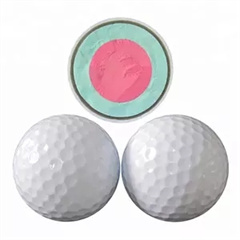1. Determine Your Hand Dominance:
- Identify your dominant hand, which is the hand you primarily use for tasks like writing or throwing. In golf, this hand is typically referred to as your “lead hand.”
- For right-handed golfers, the left hand is the lead hand, and for left-handed golfers, it’s the right hand.
2. Measure Your Hand:
- Measure the circumference of your hand just below the knuckles using a flexible measuring tape or a piece of string.
- Alternatively, some golf glove manufacturers provide sizing charts where you can match your hand circumference to glove sizes.
3. Understand Your Glove Size:
- Golf glove sizes are typically indicated by numbers (e.g., Small, Medium, Large) or letters (e.g., S, M, L).
- Different manufacturers may have slight variations in sizing, so always consult the specific sizing chart provided by the glove brand you’re interested in.
4. Consider Glove Materials:
- Golf gloves come in various materials, with leather and synthetic materials being the most common.
- Leather gloves offer excellent grip, feel, and durability but may require more maintenance.
- Synthetic gloves are often more affordable and may be more resistant to moisture and wear.
5. Think About Weather Conditions:
- Consider the typical weather conditions you’ll be playing in when choosing a glove:
- For rainy conditions, look for rain gloves with water-resistant properties.
- In hot weather, choose gloves made from breathable materials.
- For cold weather, opt for insulated or thermal gloves.
6. Assess Your Grip and Swing:
- Your grip style and swing speed can influence your choice of glove.
- If you have a strong grip or a fast swing, you may prefer gloves with added tackiness and durability.
- Golfers with a lighter grip or slower swing might prioritize comfort and flexibility.
7. Try On Different Brands and Models:
- Visit a golf store or pro shop where you can try on various glove brands and models.
- Pay attention to how the glove feels on your hand, how it fits your fingers, and whether it provides a secure grip on a club.
8. Check for Proper Fit:
- When trying on a golf glove, it should fit snugly but not be too tight or too loose.
- Ensure there are no wrinkles or bunching in the palm or fingers.
- Fasten the closure tab securely.
9. Test the Glove’s Feel:
- Take a few practice swings with a club to assess how the glove feels during your swing.
- Pay attention to any discomfort, restriction of movement, or slipping.
10. Consider Budget and Quality: – Golf gloves vary in price, and more expensive models often offer better materials and construction. – Balance your budget with the features and quality that are most important to you.
11. Read Reviews and Seek Recommendations: – Online reviews and recommendations from fellow golfers can provide valuable insights into specific glove models and brands.
Remember that personal preferences vary, so what works for one golfer may not be ideal for another. Take your time to find the golf glove that best suits your needs, fits comfortably, and enhances your performance on the golf course. Once you’ve found the right glove, be sure to care for it properly to extend its lifespan and maintain its performance.


















